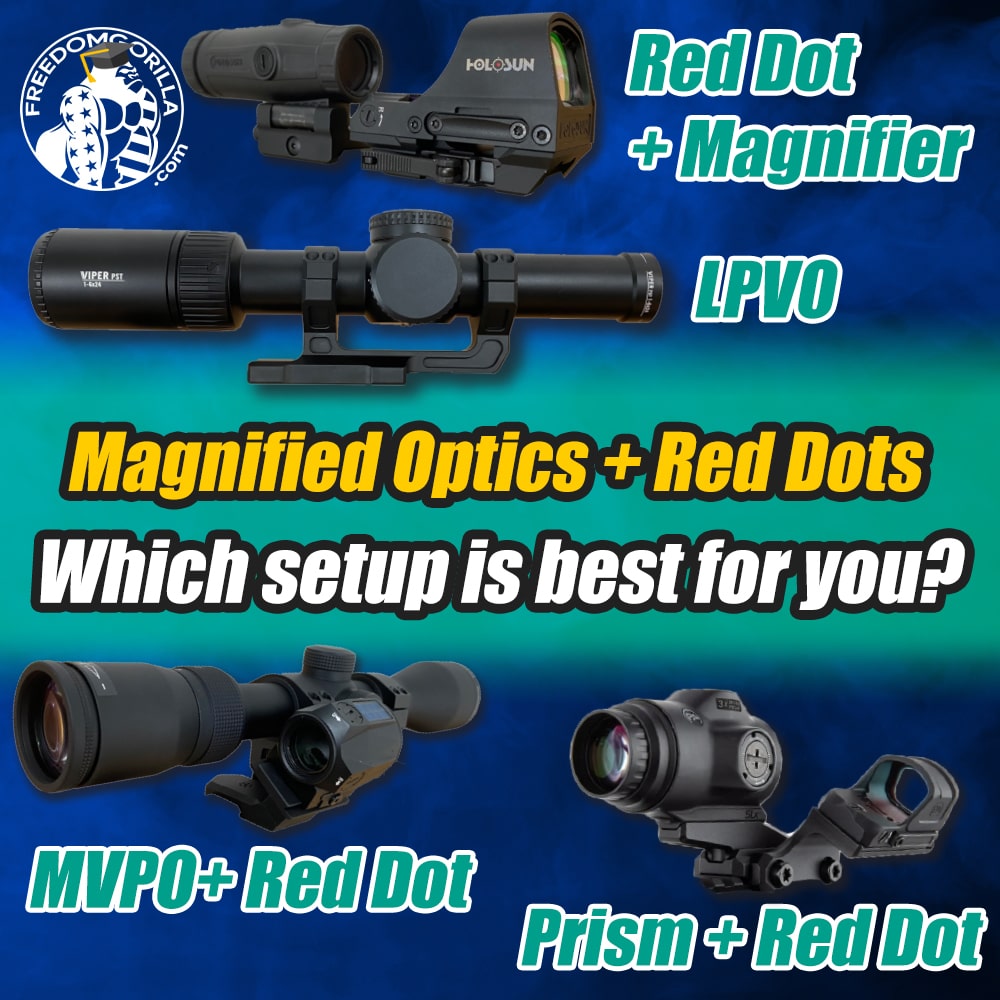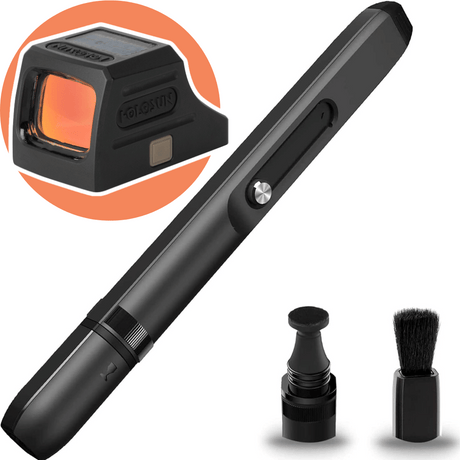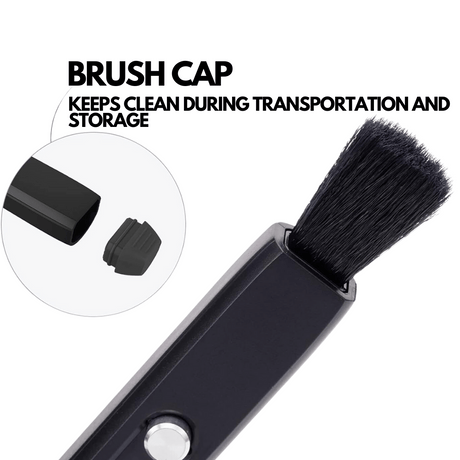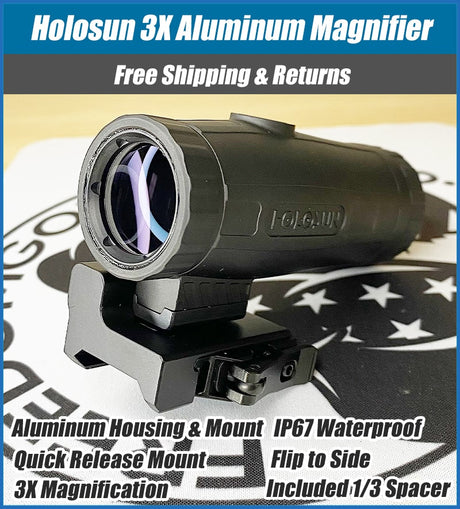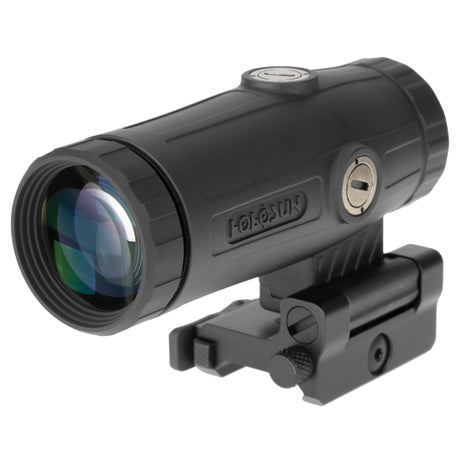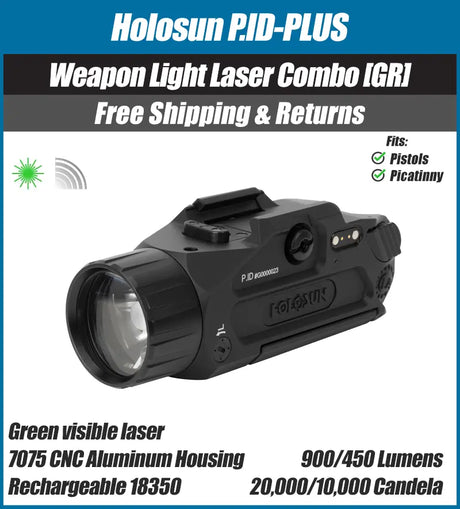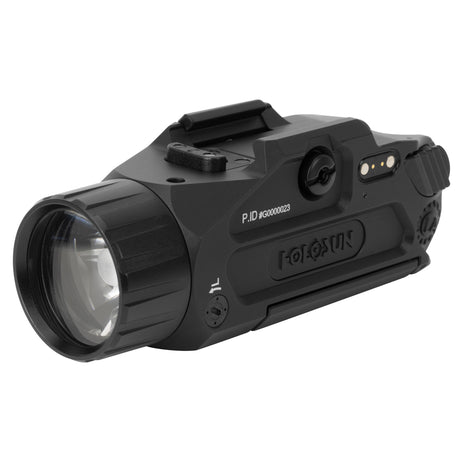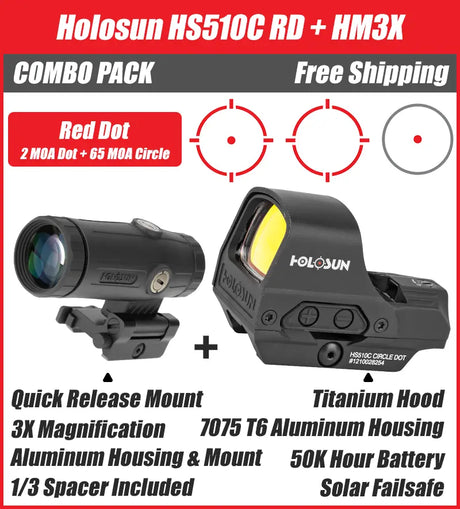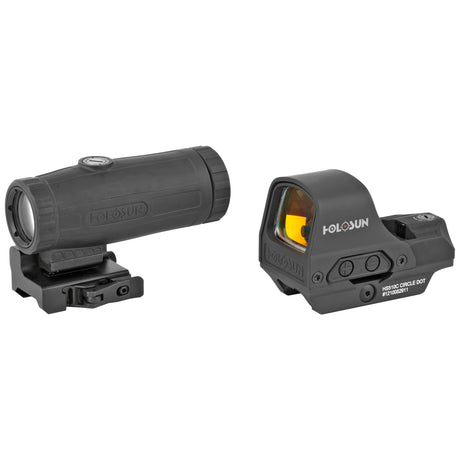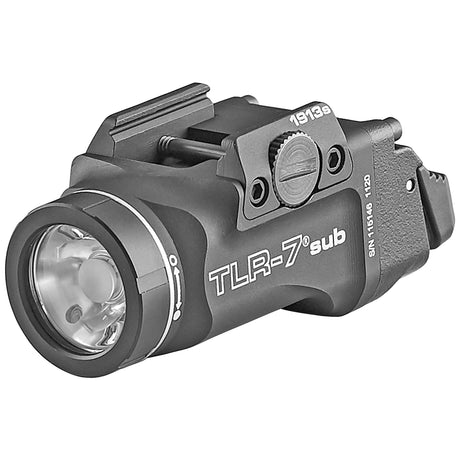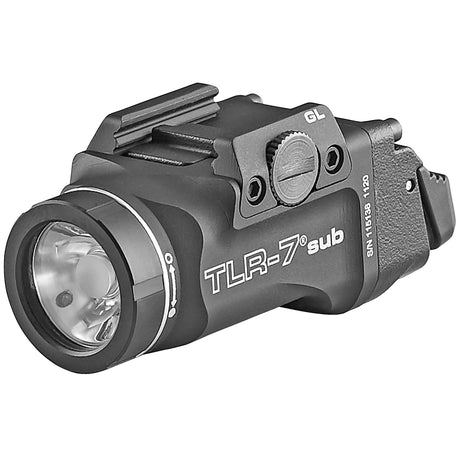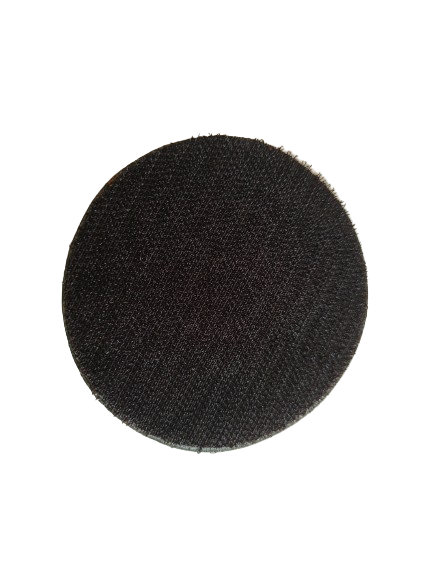Hey Freedom Gorillas, today we will discuss the difference between different optic setups you can run on your rifle or carbine. These setups are mainly going to be geared towards AR-style rifles or carbines with picatinny rails up top and semi-auto. They’re also going to be geared towards people who are looking for something that can be effective at both short-range and long-range.
We will divide it into four main categories: LPVOs (low-power variable optics), Red Dots, Variable Mid Range Scopes + Red Dots, and Fixed Prism Scopes + Red Dots.
This is an ongoing debate, and some people prefer certain setups to others. In this guide, we will share our thoughts and lay out the pros and cons of each to give you a clear understanding.
Key Takeaways
To summarize the article, here are the cliff notes.
- LPVOs (Low Power Variable Optics) - These are a simple solution that gives you close and long-range effectiveness. The downsides are that they take up a lot of rail space, are usually on the heavier side, require eye relief, and if you need the illuminated reticle to be daylight bright, you have to find specific LPVOs that will give you that. The positives are that you will have more advanced reticles with rangefinding and BDC capabilities, and you may have better glass clarity depending on the brand you buy. In our opinion, LPVOs are best if you favor better mid to long-range capabilities but still need close-range usability.
- Red Dots, Holographic Sights, 1X Prism Scopes + Magnifier - This option will be the best close-range option. Red dots and holographic sights have no eye relief, and red dots are usually much lighter than scopes. When you pair it with a magnifier, you will have less rail space taken up and will have effectiveness out to long distances if needed. The downsides here are you won’t have fancy BDC or rangefinding reticles (unless you have any of the the ACSS CQB Red Dots or Primary Arms Pegasus Magnifier), and your range will be limited. Most magnifiers are 3X zoom. These are great options if you favor close-range performance but still need some mid to long-distance capabilities.
- MPVO (Mid Power Variable Optic) + Red Dot - This option uses something like a 2-10x or 3-9x scope plus an offset red dot sight. This option will be similar to an LPVO, except you will have better long-distance capabilities, and in some cases, your short-range capabilities may be better than the LPVO. This setup is used because the scope can be used for mid to long-range distances, and the offset red dot can be used for close range, usually by tilting your rifle sideways or raising your head up (depending on the red dot mount you use). This setup is kind of like the best of both worlds, but it will be a little bulkier than an LPVO-only setup.
- 3X or 5X Prism + Red Dot - This is another option and a potentially simpler option than using a scope. You can use 3x or 5x prism scopes, and you can mount a red dot on top of them or offset. This method is a little simpler than the MPVO + Red Dot and would take up less rail space. The main downside is that the prism scope will be a fixed power, and the highest power prism on the market is 5x. The positive aspect is that prism scopes are usually pretty tough (like Trijicon ACOGs). These are a good option if you want a strong close and mid-range setup but still want some long-range capabilities.
LPVOs - Low Power Variable Optics Advantages & Downsides

There are tons of Low-Power Variable Optics (LPVOs) on the market. LPVOs are anything with 1-4x, 1-5x, 1-6x, 1-8x, or 1-10x zoom. What gets complicated about these is that there are so many brands, so many price points, so many reticles, and so many performance differences. It is overwhelming.
There are a few things you should know about LPVOs. The 1X isn’t always a true 1X; sometimes, it's a 1.25x, and sometimes, it's a 0.8X. So, if you wanted to utilize both eyes open shooting at 1X, you’d have to ensure the LPVO you purchased was a true 1X.
The other important thing to note is that if you plan on using it as a “red dot,” you will likely need a daylight-bright reticle, which means the red dot is easily visible in daylight. There are many “illuminated reticle” LPVOs, but only some are actually daylight-bright.
The other factor to consider is glass clarity. As a general rule of thumb, the further you stretch the magnification range, the better glass you will need. So, if you were to purchase a 1-10X, you would want to make sure you are paying extra for high-quality glass. If you bought a “budget” 1-10X, the 10X on it may not be very usable due to poor clarity, detail, and/or eye relief.
Because of this, LPVOs can become pricey, and choosing the optic that best suits your needs can be difficult.
LPVO Advantages
There are benefits to LPVOs, so let's take a look at them.
- Range: LPVOs give you a good range. Even a 1-4X, which is almost getting phased out now, still gives you 1X more magnification than a red dot + magnifier combo. The most popular and affordable combo is usually in the 1-6X, but 1-8X and 1-10X are becoming more popular. For one optic to give you 1X all the way to 6X, 8X, or 10X is pretty amazing, and you will only find it with LPVO’s.
- Clarity: Since there are so many LPVO options on the market with varying price points, if you were to pay a little more for high-quality glass, your LPVO glass would likely be superior to the glass of a red dot magnifier or a prism scope. So, if you need clarity at longer distances, buying a high-quality LPVO will give you that.
- Reticles: The other advantage LPVOs have over something like a red dot is more advanced and etched reticles. An LPVO doesn’t need batteries to function, and many of the modern LPVO reticles are designed to give you some kind of “horseshoe” reticle, which can be used for fast target acquisition at close range but also gives you many BDC and/or rangefinding capabilities at longer distances.
LPVO Downsides
Like anything, LPVOs have downsides, but how big of a deal they are is up to you. So, let's get into them.
- Price: As previously mentioned, if you want the ultimate in LPVO performance, you really shouldn’t cheap out on it. This means for a good mid- to top-tier LPVO, you are looking at anywhere from $300 to $999+. You could purchase cheaper models for under $300, but glass clarity will suffer a bit.
- Distance: The LPVO has an advantage over a red dot, but compared to an MPVO like a 2-10X or 3-15X, the LPVOs would not have as much magnification. You can still use them at long distances, but let's say you had a 1-6X. A 2-10X would be superior for longer distances.
- True 1X Shooting: If you like to shoot with both eyes open at close distances, you must ensure your LPVO has true 1X magnification. Many LPVOs don’t have exact 1X magnification; instead, they may be 1.3X or .08X.
- Eye Relief: LPVOs require eye relief, which means your head has to be in the correct position and far enough away from the scope to see the full sight picture. Eye relief gets tighter as you increase the magnification.
- Mount: When you purchase an LPVO, you usually need to purchase a mount, which adds to the price.
- Weight: LPVO’s aren’t light. They usually come in about 17oz, maybe heavier, and that is without the mount. If you were to find a lightweight mount at 3oz (which is very light), you are at 20oz. When compared to a 5oz red dot + a 10oz magnifier, the LPVO is 5oz heavier.
- Rail Space: LPVOs may look small online, but when you mount them on your AR-style rifle or PCC, they take up almost the entire top rail. They are usually about 10 inches long.
- Bulk: LPVOs, in our opinion, are a little bulky. You definitely feel them on the rifle.
- Illumination: As mentioned before, not all illuminated reticles are daylight-bright. You will have to pay more to get that daylight-bright reticle.
- Battery Life: If you care a lot about illumination, then it’s worth noting that an LPVO's battery life is not going to be as high as that of a red dot. Expect sub-1000 hours of battery life.
- Iron Sight Backup: If you like using iron sights as backups, with an LPVO, you will need to get offset iron sights. You won’t be able to use flip-up front and rear sights like you would with a red dot.
Red Dots, 1X Prism Scopes, Holographic Sights + Magnifier Advantages & Downsides

Here, we will discuss red dot sights, holographic sights, and 1X prism scopes. We are grouping these together because they all offer 1X magnification. Red dot sights, holographic sights, and prism scopes accomplish similar tasks, except they create their reticles differently.
Red dot sights bounce the laser off a piece of glass into your eye, holographic sights bounce the laser up and down to create a hologram in front of you, and a prism is basically a 1x-powered mini scope.
Each of these can be used with a magnifier, which is also like a mini scope. It’s important to note that with this option, you only have the magnification when needed. In most cases, you would use your red dot, holographic, or prism scope as your primary sight, but if you ever needed extra magnification, you would just flip your magnifier over and instantly get that extra magnification.
Using any of these with a magnifier is a fantastic close-range option that will give you mid-range capabilities when needed.
Red Dot, Holographic Sights, Prism Scopes + Magnifier Advantages
- Price: Out of any options we cover here, these will be the most affordable. Holographic sights and some red dot sights may get pricey in the $400+ range; however, you could secure a solid, reliable red dot sight for under $200. Magnifiers you can find for sub $200, but for a nice one, you are probably looking at about $200
- Weight: If you go with a tube-style red dot sight, they weigh about 5oz. Magnifiers are going to weigh about 10oz. If you are hellbent on saving weight, this will be the lightest magnified setup you can run. Holographic sights and prism sights are going to be 7-10oz+.
- Battery Life: Tube-style red dots will have 25k-50k hours of battery life, holographic sights will have about 1000-1500 hours of battery life, and prism scopes' battery life will vary by manufacturer, but they can also have 25k-50k hours of battery life.
- Durability: I suppose this could be up for debate, but in our opinion, red dot sights, holographic sights, prism sights, and magnifiers are usually more durable than scopes. They are smaller, usually made with stronger housing materials, have less stuff inside to break, and there isn’t a lot of leverage if they drop to really break something like a scope would have.
- Eye Relief: Red Dot Sights and Holographic sights require no eye relief. 1X prism scopes have some eye relief, but they are very generous, and the magnifiers will have eye relief similar to a scope.
- Modularity: If you like options, this setup allows you to run the magnifier only when needed. In many cases, magnifiers come with quick-release mounts, so you could remove them entirely if you didn’t want to use them.
- More Railspace: The magnifier engaged + red dot may be shorter than an LPVO, but overall, you will have more room on the top of your rifle with a magnifier + red dot, prism, or holographic sight setup.
- Iron Sight Backup: If you love your Magpul MBUS or flip-up sights, you can still use them with this setup. They won’t work when your magnifier is engaged, but you can still use them using the red dot or holo sight. With the prism sight, they “might” be usable.
Red Dot, Holographic Sights, Prism Scopes + Magnifier Downsides
These options are great for close range (the best actually) but when you get into mid-range or long-range, you will see the weak points. Here are some big ones.
- Limited Magnification: Most magnifiers are going to give you 3X magnification. There are some that are 5X and 6X coming out however, regardless of the magnification, you have a fixed power. So, if you had a 6X, you may find a situation where you wanted a 3X .. and if you had a 3X, you may encounter a situation where you wish you had a 6X!
- Eye Relief: With the magnifier engaged, you will have eye relief similar to that of a scope.
- Glass Clarity: There are different brands of magnifiers on the market. The glass on most of them is pretty decent. However, if you demand the highest quality glass, you will need to pony up for the more expensive magnifiers. If you demand the best clarity and glass quality, you will find that more so in higher-end scopes than magnifiers.
- Reticle Limitation: LPVOs and MPVOs will beat red dots and holographic sights in the reticle arena. With red dots and holographic sights, you will get a 2 MOA dot or a 1 MOA dot, and the only BDC reticle will be the Primary Arms ACSS CQB. This gives you a chevron + BDC drop - this is one of the best reticles for a magnifier. Primary arms also have the Pegasus Magnifier, which has an etched reticle with BDC for use with a red dot. 1X Prism scopes will have a little better-etched reticle; however, the bottom line is that if you want the most information and usability from a reticle, the red dot, holographic sights, and prism scopes are not going to have as much as an LPVO or MPVO.
- Battery: The red dot sights and holographic sights will only work with battery or solar power. A 1X Prism scope has an etched reticle like a scope. In any case, an LPVO or MPVO will give you a reticle even without a battery.
Mid-Power Variable Optic (MPVO) Advantages & Downsides

Next on the list, we will cover mid-power variable optics, which we are grouping as scopes such as a 2-10x, 2-7x, 3-9x, 4-12x, or 3-15x paired with an offset or top-mounted red dot.
This option gives you a traditional scope and a red dot mounted on top of the scope or angled sideways.
The theory is that you would use the scope for any mid- to long-range needs and then have a red dot at the ready for any close-range needs.
The beauty of this system is that you don’t have to touch anything. For example, if you had an LPVO and needed to “Zoom in,” you’d have to rotate the adjustment knob. If you had a red dot + magnifier, you would need to engage your magnifier. However, with this setup, if you want to use your scope, you look down the scope, and if you want to use the red dot, you just adjust your head or tilt the rifle. (This doesn’t apply if you want to increase magnification).
This can also be an affordable option if you were to go with something common like a 3-9X. Just for reference, it’s a lot easier to have good glass clarity on a budget 3-9X vs a budget 1-10X. This is because when you increase the low and high range, you ask for a lot more of that scope. You may also have better eye relief and eye box at higher magnification with a 3-9X vs a 1-10X at the high power.
Mid-Power Variable Optic (MPVO) Advantages
- It's the best of both worlds: With this setup, you get the mid- to long-range capabilities of a scope and the short-distance advantages of a red dot.
- Range: This setup will give you the furthest range capabilities out of any option.
- Affordability: As mentioned before, since these optics are not doing any crazy low range like 1x, it’s much easier to find quality glass at higher magnifications at more affordable prices than a 1-8x or 1-10x LPVO. If you want 8X+ magnification but want to stick to a more affordable budget, we recommend this option over a cheaper LPVO in the 1-8X or 1-10X range.
- Clarity: Referring to the scope, there will be high glass clarity if you get higher glass tiers than if you had a red do magnifier.
- Reticles: Referring to the scope again, you will have BDC reticles and other informative reticles you could use vs the red dot + magnifier setup.
- Eye Relief: The scope will still have eye relief, but a 3-9X should have more forgiving eye relief and eye box than a 1-10X with similar magnifications. Also, the offset red dot will provide unlimited eye relief.
Mid-Power Variable Optic (MPVO) Downsides
- Weight: This set-up's weight is going to be maybe the heaviest. However, the scopes could be lighter than an LPVO, and then you will need a red dot. If you use a pistol red dot, it won’t add too much weight. Either way, you are looking at likely 25-30oz+ for a setup like this.
- Price: While the scope may be more affordable, you will still need a red dot. A cheaper pistol red dot can be purchased for under $200.
- Mounts: You must buy mounts for the scope and red dot, which will add to the cost.
- Railspace: Like the LPVO, this will take up most of your top rail.
- Cheek Weld, Rifle Orientation: To use your red dot, you will need to mount it on top of the scope or offset on the side. In either case, you will need to use a potential chin weld or tilt the firearm slightly to use it. This isn’t a major issue, just something worth mentioning.
- Bulk: This option can become bulky. If your red dot is mounted on the top, you have extra height. If it’s mounted offset, then you will have some sideways protrusion. The red dot + magnifier also has this sideways protrusion, but the magnifier can be engaged when stowed to eliminate it. This setup, if you have the red dot offset, will always stick out to the side a bit.
3X/5X Prism Scopes Advantages & Downsides

The last optic setup we want to cover is the 3x or 5x prism scope options paired with a red dot.
This option is similar to an MPVO + Red Dot combo, but it’s a little more compact and, in our opinion, possibly a little bit more durable. It will also have less magnification.
With this setup, you would have a prism scope with either a 3x or 5x magnification and pair it with a red dot sight, either offset or mounted on top.
This is very similar to the ACOG setup you see in the military sometimes.
This setup gives you a magnified optic that is always accessible. It can give you good mid-range capabilities with some long-range potential paired with the close-range capabilities of your red dot.
This is a great option if you want something compact, rugged, and capable.
3X/5X Prism Scope Advantages
- Durability: Fixed prism scopes are tougher than rifle scopes. There are fewer moving parts, and the housing of the prism scope could be made of a tougher material, depending on the one you purchase.
- Simplicity: With this setup, you have a fixed power scope and a red dot. There is no adjusting magnification, engaging or disengaging a magnifier, or really any moving parts that need to be interacted with. When you need magnification, you look through the prism scope; when you need close range with no eye relief, you look through the red dot.
- Railspace: This setup will be on the compact side, potentially even more compact than the red dot + magnifier setup. If you get a prism scope and mount the red dot on top, then you should still have some top rail space left over.
- Price: Prism scopes can be pricey, but there are a few different options in different price ranges to fit your budget. The other nice thing is that you won’t need to buy an extra mount for the prism scope. You likely will need to buy the mount for the top mounted or offset red dot sight, though.
- Reticles: The prism scopes usually come with reticles that have a BDC or rangefinding capability and are often also illuminated.
- Short-Range Effectiveness: Having the offset or top-mounted red dot sight will give you the best short-range capability, similar to running a dedicated red dot sight.
- Weight: Depending on the brand you buy, the weight of your prism scope with mount will vary. Some will be 15-20oz, but brands like Primary Arms have micro prisms that clock in around 10oz or so. This option would be considered a lighter-weight option compared to any of the MPVO or LPVO options we mentioned.
3X/5X Prism Scope Disadvantages
- Eye Relief: Since the prism scope is similar to a regular scope, you will still have eye relief when using it. The higher the magnification, the tighter the eye relief and eyebox will be.
- Range: If you have a 3X or a 5X, you will get the most magnification. You can still be very effective at 3X or 5X however, if you wanted 8X or 10X, you are not going to get it in the prism scope (as of right now)
- Options: This isn’t a major disadvantage, but there aren’t as many prism scopes on the market as there are scopes. Some major players in the prism space are Trijicon, Burris, Primary Arms, Vortex, and Vector Optics.
- Cheek Weld, Rifle Orientation: To use your red dot, you will need to mount it on top of the prism scope or offset on the side. In either case, you will need to use a potential chin weld or tilt the firearm slightly to use it. This isn’t a major issue, just something worth mentioning.
Conclusion
As you can see, there are so many options and variables to consider. Here at Freedom Gorilla, we don’t think there is one option that is better than another; instead, these are the options, and the one that is best would depend on your rifle and your needs.
If you are anything like us or our customers, then chances are you will eventually have a combination of all of them!
Hopefully, you found this information helpful. If you ever have any more questions or need help figuring something out, please reach out to us, and we will be happy to help.
Thank you for reading!

